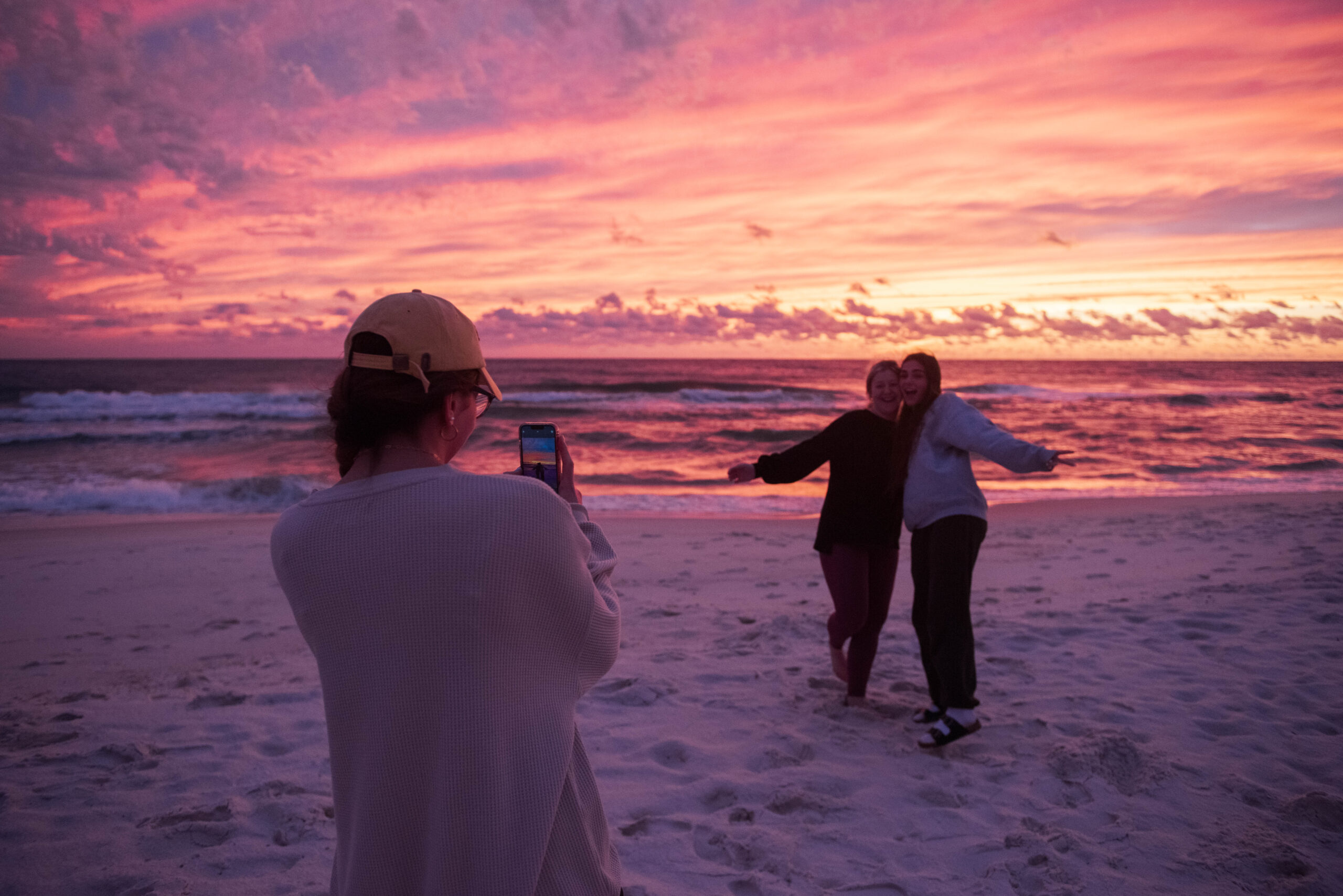The most profound photo I’ve ever seen is one taken by Bob Adelman, a photographer known for his work in documenting the Civil Rights Movement. The photo is deceptively simple: it’s the smile of Dr. Martin Luther King Jr. after a federal judge granted him and the crowds he was leading permission to march from Salem to Montgomery in the spring of 1965.
It’s that simple, right?
Not at all. This five-day, 54-mile march was the embodiment of King’s push for a nonviolent civil rights movement. In this moment, Adelman captured King’s joy at the promise of progress without violence. Whether you realize it or not, most of us are likely familiar with Adelman’s photos of the March on Washington held in August 1963, where King famously gave his “I Have a Dream” speech. We know King as a passionate and strong leader; he is an American hero, and history remembers that. But how often do you see a photo of him smiling from ear to ear? Our textbooks don’t care about his little victories. But Adelman did, and because of him, we have, in the form of photos, proof that King was more than the face of the civil rights movement; he was a man who truly did value the fight for civil rights and who believed in the nonviolent route to achieve it.
In the age of film, every shot you took cost you. Photographers in the mid-20th century had to be very aware and careful of every single photo they took. They had to make it count, and Adelman certainly did. His career as a photographer is defined by his ability to capture seemingly mundane moments while simultaneously telling the story of entire movements in history in one photo.
As a photographer myself, I desperately want this to be true of my own work. As such, I am responsible for how history will remember us. Every aspect of every photo matters, even down to the simple decision of what to include or exclude in a shot.
Last December, I went on the Set Apart Retreat and brought my camera along with me. One night, there was a brilliant sunset over the ocean. I had never seen color like that before in my entire life, and the reflection on the waves was other-worldly. And trust me, I got plenty of photos of the ever-changing painting that I had the privilege to behold. But I also photographed people taking photos of their friends, posed against the sky and sea. I can show you a beautiful sky. But more importantly, I can show you creation’s ability to move people. The sunset was stunning, but even more beautiful was how people loved it.
This is what photography should be: an opportunity to capture humanity.
Nowadays, it costs us nothing to take a photo. You can take eighteen photos of your latte art, and all you’ve lost is a few seconds of your day. Well, that and an opportunity to create an image that tells a story that matters. These days, you can inherit a DSLR from your aunt, start an instagram account, and suddenly you’re a photographer. But what’s the point? What are you choosing to focus on, and does it hold value?
With every photo taken–whether that be on an iPhone, a digital camera, or a film camera–history is made. Historians will look back at our Instagrams and try to discover what we value, and in every photo, there is value to be found. To bring back the latte art, are you photographing that because you really love coffee? Or art? Or do you, like myself, just really love that coffee seems to be a force that people lovingly rally around? Where are you finding the beauty? Is there a way to tell the story you are trying to remember?
I love coffee just as much as the next person, but I do think it’s a little bit foolish to buy coffee when I can make it the way I like it at home for free(ish). Yet I do it anyway. Not because of my affinity for coffee but because of my deep affection for the community it builds. So, when I inevitably stumble into the coffee shop on Main Street, camera in hand, I photograph my best friends doing their jobs behind the counter. They steam and pour milk with such precision that I can’t help but compare it to what I imagine Michelangelo’s expertise looked like when painting the ceiling of the Sistine Chapel.
I don’t think history will care what our coffee looked like. But I do think it will appreciate the chance to remember the love shared over such mundanity. What is the study of history if not, ultimately, the study of what people love and value the most and how they act upon that?
In a time when it is so easy to capture anything and everything, can we be more intentional to not just show what we value but instead show why we value what we do?
Featured image by Lena Overman.


